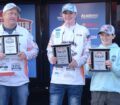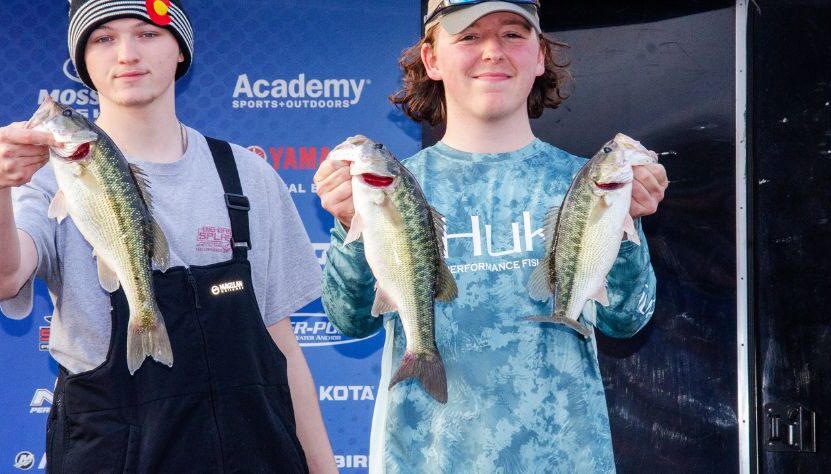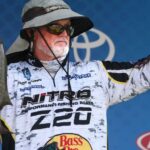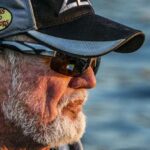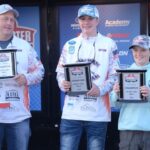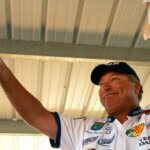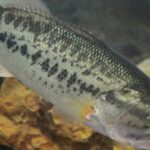Editor’s Note: Rick Clunn of Ava, Missouri, has been a bass pro for 46 years, has won four Bassmaster Classics, has been Angler of the Year and has earned about $3 million in tournament bassing. Twenty five of today’s bass-fishing professional name Clunn as the man most admired in bass fishing. “When I asked longtime legendary angler Rick Clunn what was the biggest change he’d seen in tournament bass fishing, he answered, ‘It’s the influx of high school and college tournament fishermen,’” John E. Phillips, outdoor writer, says. “Clunn explained that, ’I guess the reason that’s such a big deal is because I never saw that trend coming.’” Part of this week’s information is from an interview with Clunn.
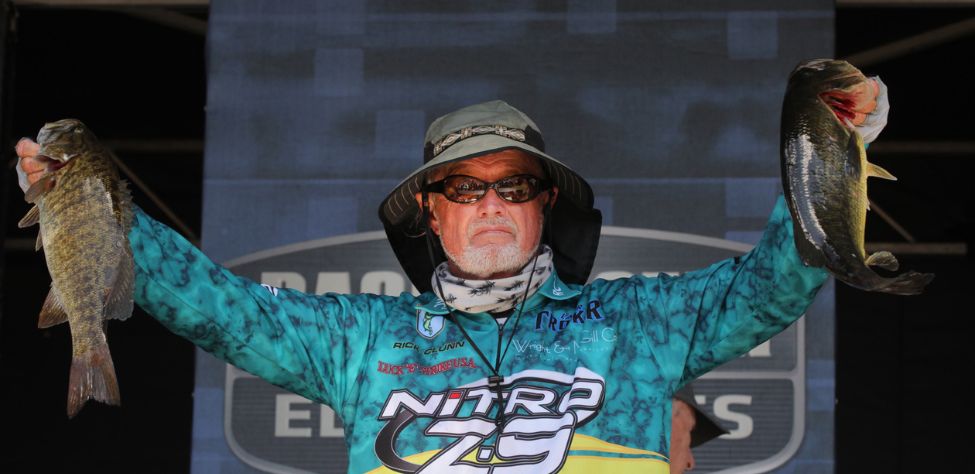
In the past, if somebody told you that Denny Brauer or Tommy Biffle won a bass tournament, you would know how they won it, because they would be pitching or flipping lures. If David Fritts won a tournament, you would know he caught his bass on crankbaits. We were all specialists back then.
However, these young bass fishermen aren’t specialists. They can fish every technique that’s ever been fished and have success too with forward-facing sonar that’s a technique we never learned. The old tournament anglers could win or come close to winning, a tournament by fishing their specialties. But when they weren’t fishing a technique they weren’t best at, they weren’t so great. However, today, these young anglers can fish every tactic known to man and catch bass with them.
Fishing crankbaits was my specialty but also my weakness. The crankbaits I was fishing with back in the days when I was doing well in tournament fishing were designed to catch 2-pound bass. Today if you want to win a tournament, you’ve got to fish crankbaits that are designed to catch five-pounders plus.
The California big swimbaits have made an impact on the sizes of lures that tournament fishermen use today. If I go to a fishing show in Fort Worth, Texas, do you know what lures are going to sell the best at that show? None of the traditional ones will. The young people and old fishermen will show-up at those fishing shows with only 100 lures to sell, but those lures may cost $200 each. Those lure salesmen with the giant swimbaits will sell out in the first three hours of the show. These are the same kind of big swimbaits that first came out of California when the anglers were fishing for giant bass. Today we’re starting to adapt those big lures to lakes like Lake Guntersville in Alabama, Lake Okeechobee in Florida and other lakes where we know there’s big bass, but we’ve just never cast big lures to those bass.
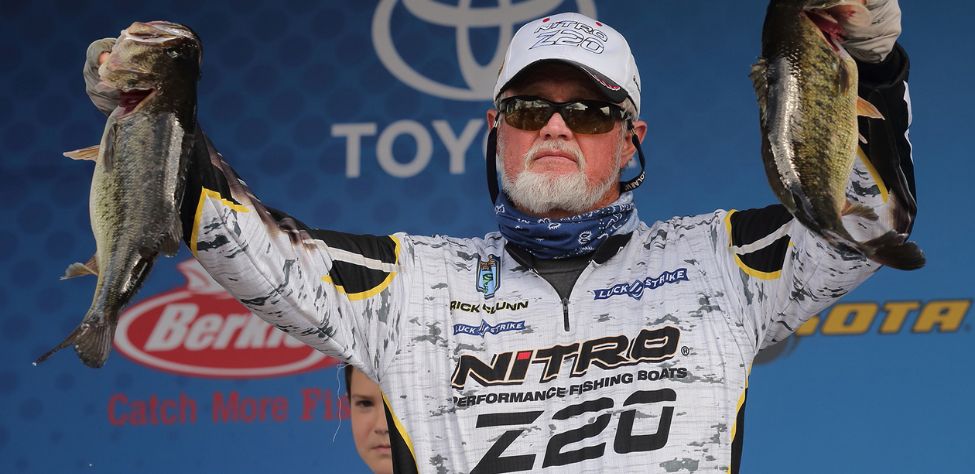
In 2019, when I was 71-years old, I won a tournament on the St. Johns River with a big spinner bait. I’ve been asked, “When you get behind in a tournament and you know you’ve got to change lures to catch-up and possibly win, what lures do you use?” I must answer, “Generally the wrong ones.” I’ve been asked, “What lures are winning tournaments today?” And, I can tell you that it’s the lures that the anglers can fish effectively using forward-facing sonar. Forward-facing sonar demands a different type of lure fished a new way to be effective.
Kevin VanDam and I used to do well and win tournaments for one reason: we made more casts in a day than other anglers did. In 1990, I was timed at making 2,348 casts in one day when I won the Bassmasters Classic. Most of my casts back then were never at bass – just fish. But today, the guys who know how to use forward-facing sonar can win by only making 200 casts in a day. The difference is that all 200 casts they’re casting are at bass they can see.
If I make 2,000 casts, I’m hoping that 50 of them will be casts to places where there are bass. That’s how forward-facing sonar is changing the game of bass fishing. These young people who grew up with forward-facing sonar as soon as it came out can win a tournament by only making 200 casts. In the old days, I would say, “That’s impossible.” However, forward-facing sonar is much-more efficient than the sonar we had back then. These new anglers don’t make a cast until they are looking at fish on their sonar.
Looking for more content? Check out our YouTube channel and watch Mark Davis – My Pattern’s Blown, Now What? by John E. Phillips.
Expert Guidebooks on Bass Fishing: Best Sellers

If you want to become the best you can be, find someone who’s already become the best at what you want to do and follow his or her instructions. This is what I’ve done in my new book, Bass Pros’ Season by Season Tactics.
In this book, I’ve chosen some of the best bass fishermen to give you advice on how to find and catch bass during each period of a bass fish’s life, including professionals like Kevin VanDam, Denny Brauer, David Fritts, Rick Clunn, Larry Nixon, George Cochran, Mark Davis, Woo Daves, Gary Klein, Davy Hite, Michael Iaconelli, Skeet Reese, Mark Rose, and Shaw Grigsby.
My hope is that this book will help you find and catch more bass at every time of the year and each day you’re on the water. The men included in this book are some of the best mentors I know of for successful bass fishing anywhere in the nation.
VERSIONS: AUDIBLE & PRINT
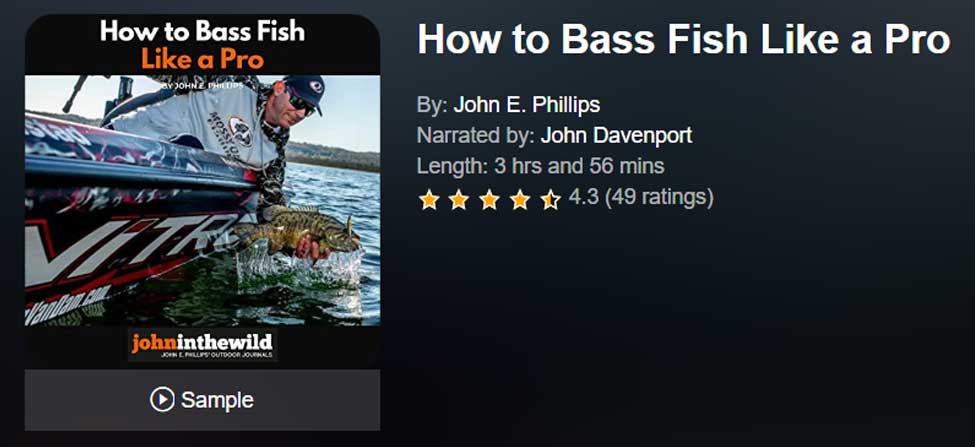
How to Bass Fish Like a Pro
If you could sit down and interview some of the best pro bass fishermen in the world, what would you want them to tell you to help you improve your bass fishing skills?
In this book, How to Bass Fish Like a Pro, Kevin VanDam explains how he catches bass consistently, and how he fishes all 12 months of the year. In the bonus chapters, he will tell you how to fish for hot-weather bass.
Denny Brauer will tell you the ways he hates to fish, how he picks the best fishing lures for different water and weather conditions, and will give you his best fishing tips for hot weather. In Brauer’s bonus chapters, he’ll teach you when to flip a jig, a tube, or a creature bait and tell you his three tips for how to be a better fisherman.
Mark Davis, in Chapter 3 of the book, explains his five secrets to becoming a better bass fisherman, how to turn your bass fishing around to the positive side, and how to catch hot-weather bass. In the bonus chapter, you’ll get six different interviews with Davis, where he tells you: three tips for becoming a better bass fisherman; his three favorite bass lures; and how to keep a big bass on the line and get it to the boat.
James Niggemeyer tells you how to become a bass pro. He also tells you how to catch bass when the weather sizzles. In Niggemeyer’s bonus chapter, he explains how to move from being a bass-club fisherman up to being a pro.
Mark Rose will explain his five favorite go-to bass lures, and how to catch bass in the middle of the summer.
In this book, you’ll hear from top-performing pro fishermen about how they catch big bass consistently, and what they do to win millions of dollars as professional bass fishermen.
VERSIONS: AUDIBLE, KINDLE & PRINT
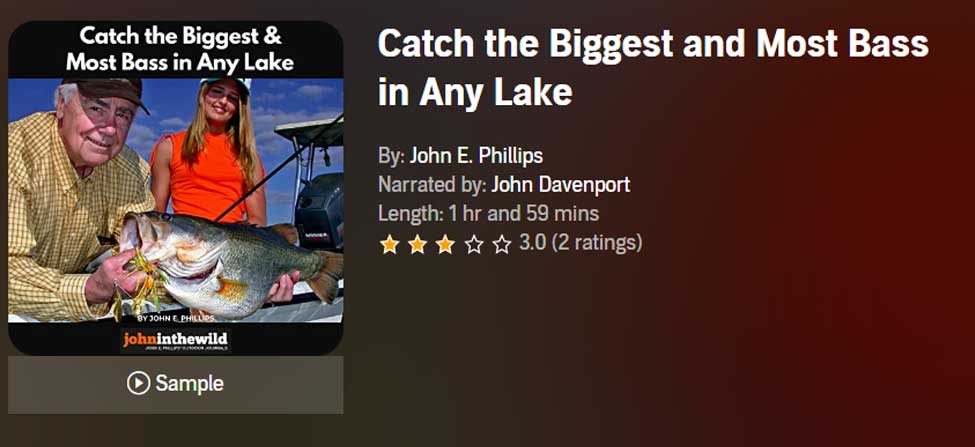
Catch the Biggest and Most Bass in Any Lake
If you were having open-heart surgery at the hospital, you’d want the best doctor with the most experience and the latest equipment and techniques that money could buy to do your operation. You’d study these doctors’ credentials to learn who was the best.
This is the same type of research that author John E. Phillips has done with the best bass fishermen in the nation to solve the problem of how to find and catch the biggest and the most bass in any body of water that he fishes.
This is the same type of research that author John E. Phillips has done with the best bass fishermen in the nation to solve the problem of how to find and catch the biggest and the most bass in any body of water that he fishes.
In this book, you’ll hear about the techniques, tips, baits, lures, and tackle that 18 of the nation’s best professional fishermen use to support their families by winning bass tournaments and catching the most and the biggest bass they can in every tournament they fish.
Most of these anglers are Bassmaster Classic winners, Megabucks winners, Angler-of-the-Year and FLW Tour winners – like Rick Clunn, Kevin VanDam, George Cochran, Mark Davis, Paul Elias, Skeet Reese, Larry Nixon, Hank Parker, Ken Cook, Denny Brauer, Alton Jones, and Jay Yelas.
Also, every serious bass fisherman should know Timmy Horton, Mark Rose, Randy Dearman, Harold Allen, Mike Wurm, and Shaw Grigsby, men whose tactics you’ll find in this book. To learn how to fish for bass and change your bass-fishing trips from fishing trips to catching trips, this book is a must-have.
VERSIONS: AUDIBLE, KINDLE & PRINT
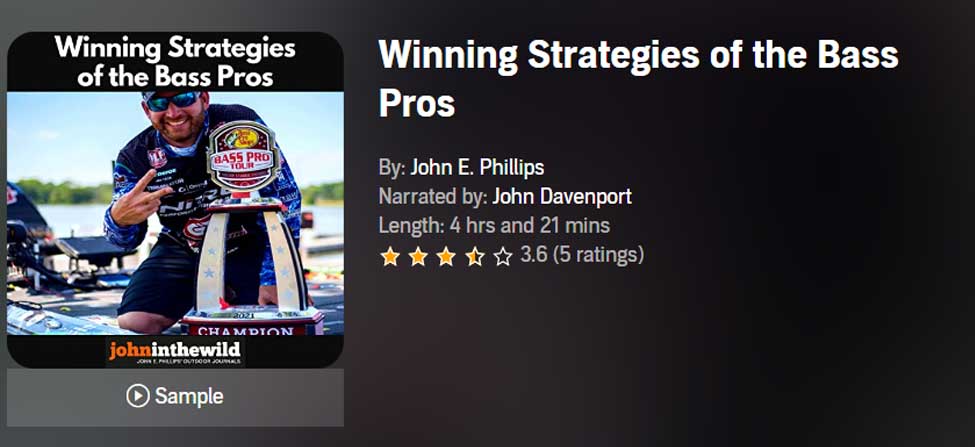
Winning Strategies of the Bass Pros
I learned many years ago if you want to be the best you can be, then you need to learn from the best – particularly when you want to be the best bass fisherman possible. That’s why I’ve written Winning Strategies of the Bass Pros about 11 top bassers.
If you’re wondering at what age you can start learning about bass fishing, you’ll see in the first two chapters about two young men who have come up through the ranks of collegiate bass tournaments – Jordan Lee, who won the Bassmaster Classic in 2017, and Dustin Connell, who won $100,000 in a B.A.S.S. Elite Series tournament in Mississippi in 2017. Top-name pros on both the B.A.S.S. circuit and the FLW circuit are in this book, including Kevin VanDam, Jay Yelas, George Cochran, Rick Clunn, Larry Nixon, Woo Daves, Randy Howell, Scott Canterbury, and Gary Klein.
VERSIONS: AUDIBLE, KINDLE & PRINT
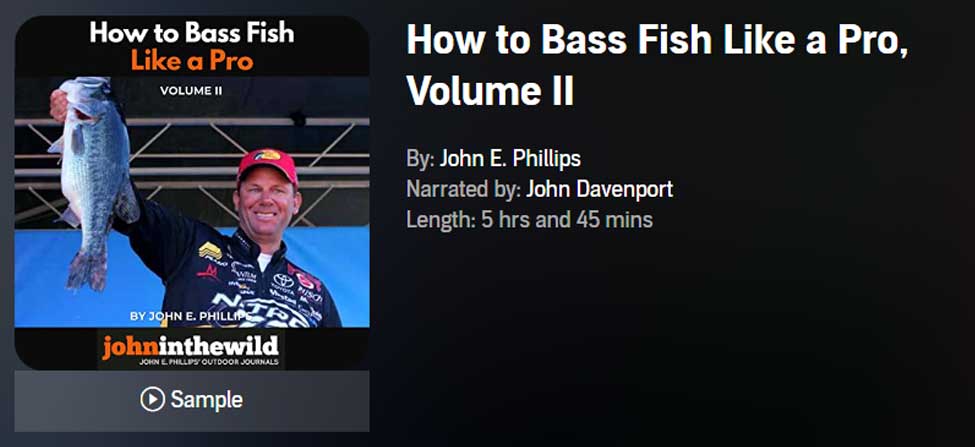
In How to Bass Fish Like a Pro, Volume II, you’ll learn tips and tactics from 21+ Bassmaster Classic winners, two Major League Fishing champions, and 20+ Bassmaster Anglers of the Year about some of the dramatic changes in bass fishing, like:
Depth Finders: You need the latest and greatest depth finders available, since they’re the brains of a bass boat with maps, GPS, side scanning, down scanning, and forward scanning features that enable you to see underwater structures and fish 100-feet away with a 360-degree view. Today’s competitive bass anglers may have four or five depth finders located on the consoles and the bows of their boats.
Other Changes in Equipment: Power fishing for bass using heavy line and rods, big baits, and bait-casting reels that resemble winches have given way to finesse fishing and new techniques like fishing the Ned Rig, the Neko Rig, the Chicken Rig, and the Tokyo Rig on spinning tackle and line as small as 6-10 pounds.
The Growth in Youth and College Competitions for Bass: A young person can begin competition fishing as early as the second grade and continue throughout high school. After that, if the competitor qualifies, he/she may win a scholarship to fish on a college team that eventually may lead them to a professional bass-fishing career.
Changes in the Ways Anglers Bass Fish: Many of the most-consistent winners never pick-up their rods to fish during pre-fishing. Instead, they’ll idle across the water, dropping waypoints from their electronics in places where they’ve identified schools of bass holding. These contestants will have at least 50-250 locations, where they’ve pinpointed schools of bass before a tournament starts.
VERSIONS: AUDIBLE, KINDLE & PRINT
Tomorrow: Rick Clunn on Fishing Intuitively


